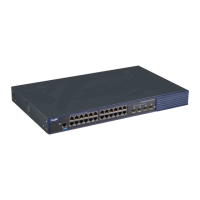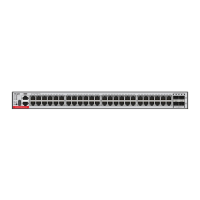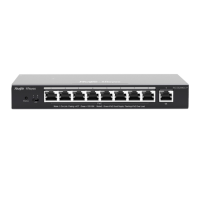weight of the static route is 1. To view the static route of non default
weight, execute the show ip route weight command. The parameter
weight is used to enable WCMP. When there are load-balanced
routes to the destination, the device assigns data flows by their
weights. The higher the weight of a route is, the more data flows the
route carries. WCMP limit is generally 32 for routers. However,
WCMP limit varies by switch models for their chipsets support
different weights. When the sum of the weights of load balanced
routes is beyond this weight limit, the excessive ones will not take
effect.
Enablement/disablement shows the state of the static route.
Disablement means the static route is not used for forwarding. The
forwarding table used the permanent route until administrator deletes
it.
When you configure the static route on an Ethernet interface, do not
set the next hop as an interface, for example, ip route 0.0.0.0 0.0.0.0
Fastethernet 0/0. In this case, the switch may consider that all
unknown destination networks are directly connected to the
Fastethernet 0/0. So it sends an ARP request to every destination
host, which occupies many CPU and memory resources. It is not
recommended to set the static route to an Ethernet interface.
The S2600-I series products support up to 32 IPv4 static
routes.
The IPv4 static route supports only the default route with the
mask being 0, and the host route with the mask being 32.
The following example configures a default route whose next hop is
192.168.12.1.
Ruijie(config)# ip route 0.0.0.0 0.0.0.0 192.168.12.1
If the static route has not a specific interface, data flows may be sent
thought other interface in case of interface failure. The following
example configures that data flows are sent through fastehternet 0/0
to the destination network of 172.16.100.0/24.
ip route 172.16.199.0 255.255.255.0 fastethernet 0/0 192.168.12.1

